Astor Terrace
Spring Hill QLD 4000
Australia
Stormwater Queensland is delighted to invite you to the second WaterSmart Bus Tour to be held on Wednesday, 29th April 2015. The WaterSmart Bus Tour will be a fantastic opportunity to experience first-hand, a very broad range of catchment management projects and to hear about the challenges and solutions related to each project. This tour will also provide participants with the chance to learn directly from the practitioners involved in bringing the projects to fruition, with plenty of opportunities for questions, debate and discussion.
Sites to be featured on this Technical Tour include:
- Fitzgibbon Chase Urban Development Project: This innovate project site includes:
- The potable roofwater (PotaRoo) project which directs harvested roofwater to a central storage and treatment plant to potable quality for reuse.
- The Fitzgibbon Stormwater Harvesting (FiSH) scheme. The project collects urban stormwater runoff for filtering and disinfection prior to distribution via a 3rd pipe dual reticulation system for on-potable uses.
- Other examples of best practice Water Sensitive Urban Design (WSUD) (e.g. bioretention).
This project was the winner of the 2012 Australian Water Association (Qld) Infrastructure Innovation Award and the 2012 Healthy Waterways Water Sensitive Urban Design Award.
What made this project feasible and why isn’t this level of stormwater treatment applied on every residential development site?
- Pickering St, Enoggera – Natural Channel Design: This was the first attempt at ‘Natural Channel Design’ in Queensland. Lessons from this site continue to influence today’s guidelines and designs. Is the approach taken on this site transferrable to other creeks and what did we learn from this early example?
- Bennett Road, The Gap – fish passage retrofit project: This project aimed to restore fish passage through existing culverts by retrofitting a proprietary fishway. This project was the winner of the 2011 Healthy Waterways Industry Award. Why wasn’t a more natural approach used here and what does the post-construction fish monitoring data tell us about designing such systems?
- Kirralee Crescent, Upper Kedron – ‘Creek Filtration Trial Project’: This system was the first system constructed as part of a trial aimed at exploring low cost ways to managing stormwater in existing urban areas. This project was the winner of the 2014 Healthy Waterways Urban Renewal. Why wasn’t a regular bioretention system constructed here, what cost savings does it offer, is this ‘alternative’ design appropriate and can it be applied elsewhere?
Speakers will include: David Hamlyn-Harris (Bligh Tanner), Grant Witheridge (Catchment and Creeks), Ross Kapitzke (James Cook University), Damian Thompson (Lat 27), Mark Gibson (Brisbane City Council) and Paul Dubowski (BMT WBM).
Register your attendance now, as seats are limited! Click here to Register.
Presenters:
 |
David Hamlyn-HarrisDirector of Water and Environmental Engineering, Bligh Tanner
David is Director of Water and Environmental Engineering and has 34 years’ professional experience in the Australian water industry across all aspects of municipal water supply and wastewater engineering. David has a particular interest in local alternative water management systems, in particular the integration of stormwater harvesting, rainwater tanks and water recycling into urban water infrastructure. He has been responsible for major wastewater treatment plant upgrades and significant water infrastructure planning programs such as the Sydney Olympic Park water management systems and the Pimpama Coomera Waterfutures Master Plan on the Gold Coast. More recently, David has developed guidelines for stormwater harvesting for the Healthy Waterways Partnership; a feasibility study for roofwater and stormwater harvesting for potable use in Melbourne; and has completed several stormwater harvesting schemes including the South Bank Rain Bank and the Fitzgibbon FiSH and PotaRoo. |
 |
Grant Witheridge Grant Witheridge is a civil engineer working in the fields of Hydraulics, Stormwater Management, Waterway Management, Fish Passage, and Erosion & Sediment Control. He has both a Degree and Masters in Civil Engineering from the University of NSW. He has over 30 years of experience in the investigation, modelling and design of hydraulic structures, including 7 years at the University of NSW Water Research Laboratory.Currently Grant is working as an engineering consultant through his own company Catchments and Creeks Pty Ltd.He is the principal author of a number of technical publications including the Brisbane City Council Natural Chanel Design Guidelines, IECA Australasia 2008 Best Practice Erosion and Sediment Control documents, and the 2007 and 2013 editions of the Queensland Urban Drainage Manual (QUDM).Since 1996 Grant has conducted over 500 training courses in construction site erosion and sediment control, stormwater management and waterway rehabilitation. In 2009 Grant was presented with the inaugural ‘Neville Gibson Award’ for services to the stormwater industry by the Queensland Branch of the Stormwater Industry Association. In 2010 Grant was honoured with the ‘Sustained Contributor Award’ for 2009 by the International Erosion Control Association. |
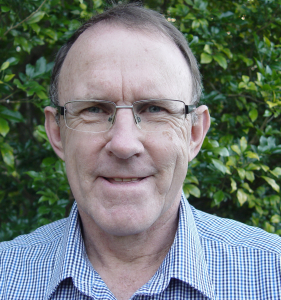 |
Ross Kaptzke Ross Kapitzke is an Environmental Engineer specialising in multipurpose planning and design for waterways, with a particular focus on fish passage design. Ross has worked through James Cook University as a consultant and in R & D in these fields for more than 20 years [http://www.jcu.edu.au/fishpassagedesign/]. He has developed specialist capability in assessment, design and evaluation for fish passage and stream rehabilitation; and in the design, development and testing of fish passage facilities for small waterway structures. Ross’s innovating work in this field has led to design and manufacturing of the award-winning Walaman prefabricated fishway system [http://walaman.com.au/].Ross has played a leading role in the development of fish passage solutions in Queensland for State Government, Councils and other clients. His work includes aquatic fauna connectivity impact assessment at catchment and road corridor scales, and concept design, detailed design and implementation of fish passage mitigation measures for a wide range of fish migration barrier problems. Ross is author of Culvert Fishway Planning and Design Guidelines (James Cook University 2010 – http://www.jcu.edu.au/fishpassagedesign/), and he continues to work on development and assessment of fishway design types and prefabricated fishway components in laboratory, field sites and prototype fishway facilities [http://www.youtube.com/walamanfishways]. |
 |
Damian Thompson Director, Lat 27 Damian is one of the founding directors of the multi-disciplinary design practice Lat27 and has practiced Landscape Architecture for over two decades. His design approach involves the creative interpretation of natural systems in ways that enrich the quality of urban communities. He has a long association with QUT as tutor and guest lecturer and co-founded the 2011 ‘flood of ideas’ project in support of disaster-resilient communities. |
 |
Mark Gibson Senior Engineer Water Management, Brisbane City Council Mark studied a Bachelor of Civil Engineering at the University of Queensland and while studying worked casually at Redlands City Council, Brisbane City Council and Geo-Eng (formally Neville Jones and Associates). Upon graduating Mark accepted a fulltime position at Geo-Eng, who straight away seconded him to Brisbane City Council Flood Management Department. After six months Mark took a fulltime position at the Council. In May 2004, Mark formed his own company, MRG Water Consulting Pty Ltd. MRG Water Consulting has specialised in flood risk management, stormwater quality improvement and assisting developers, mining firms and local government with tricky water issues. In the last 10 years the business has grown to 5 staff, (still small but good!) In 2012, Mark took a part time position at Brisbane City Council again, working in the Water Management Section. Mark works as the director of MRG water Consulting. Working at the Council has allowed Mark to focus on interesting projects such as the creek filtration systems. He is passionate about improving waterway health, reducing flood damage and risk and protecting our critical infrastructure. |
 |
Paul Dubowski Senior Environmental Scientist, BMT WBM Paul is a senior environmental scientist with 11 years of experience in the water industry. Since joining BMT WBM in 2010, he has worked across a range of fields including stormwater management, catchment management, ecology and environmental management. Paul has led numerous water sensitive urban design (WSUD) projects from conceptual design through to maintenance, strategic policy and planning, capacity building projects for local governments and catchment/waterways management initiatives. |




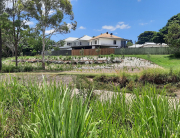

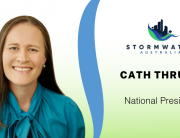
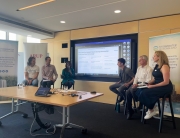
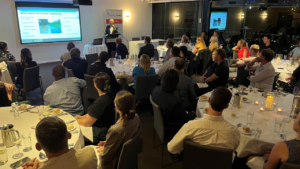

Leave A Comment
You must be logged in to post a comment.